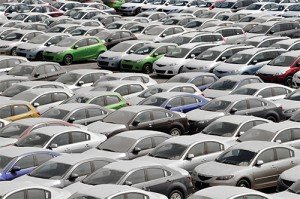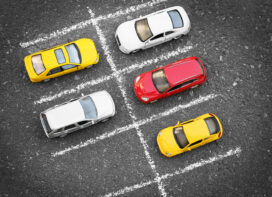Satyanarayanan
Tariffs of public parking in India are among the lowest in the world. There is a sensitivity in terms of what people are willing to pay for parking versus the financial feasibility of the parking lot. This is very similar to the story that we saw in some of the other verticals like healthcare, shopping centers and airports. The airport fee at Delhi airport was about Rs. 60 till about six years ago; today it is many times this amount. So tariffs are going up in other areas also. Parking lots bring in revenue for the municipalities as well as are a service to the citizens of the city. We have worked on many parking lots which are owned by municipalities on a PPP model and open to public in very busy areas but which are not being much used by the people. Clearly, a structural change is needed in parking management. The enforcement and the parking management have to be combined. At present, parking enforcement is with the traffic police while the management lies with the parking operator or in case of a PPP model, the developer of the parking lot. Due to the push-pull nature of parking and enforcement, the moment no parking is enforced on the road, people are pushed out of the road and they have to be pulled into the parking lots by providing them efficient services such as clean environment, good service, safety, transparent billing system, parking availability etc. Clearly the enforcement part is quite important.
For example, we did a parking lot in the centre of Bangalore which is close to the railway station and had around 800 parking base. Many people were frequenting this area – traders, people who come to purchase wholesale goods etc. But they were not really willing to park in the parking lot. So there was a clear need for tough enforcement. We had to cater to different verticals in this case. For example, people who bought electrical goods were coming only on Saturdays or the local trader community had a car, motorcycle or the gearless scooters. So we had to do a package for them. So customising certain aspects of the parking lots for users and making them comfortable in the parking lots are two important points in addition to the design, technology and operations aspects mentioned earlier.
Gian Mathur
 Designing a parking lot for a commercial tower, a mall or retail area is much simpler than providing a parking solution on high traffic shopping areas. For example, in Delhi, there are areas such as south extension, Greater Kailash, Punjabi Bagh and Lajpat Nagar. These are major challenges because there is not enough open space available for any kind of parking in these areas. Whatever space is available is highly choked and motorists are parking vehicles in crisscross manner. The parking is being managed by people who are not trained for the purpose, usually they are hired on contract basis and they are often changed. So a lot need to be done to improve parking in these areas. As far as design of parking in malls is concerned, NDMC has taken a lot of initiative in providing parking lots in Delhi in two crowded areas. There are some technical issues due to which these two parking lots are not doing so well, but a long time ago, NDMC had built a parking lot in Palika Bazar in Connaught place which was a big success. This was because everything was done at the ground level in this parking lot and parking in and out was comparatively easier. But this was in a little corner and only the people who were using Palika Bazar would visit or the people who were going to work in that area, coming in the morning and leaving in the evenings, were using it. Now some green areas are available in all these markets. So what we could probably do is that we could build some kind of a parking infrastructure below these areas. In Lajpat Nagar we have certain green areas available. We can retain those green patches and build parking facilities around three to four floors down. This is technologically possible and can definitely be done.
Designing a parking lot for a commercial tower, a mall or retail area is much simpler than providing a parking solution on high traffic shopping areas. For example, in Delhi, there are areas such as south extension, Greater Kailash, Punjabi Bagh and Lajpat Nagar. These are major challenges because there is not enough open space available for any kind of parking in these areas. Whatever space is available is highly choked and motorists are parking vehicles in crisscross manner. The parking is being managed by people who are not trained for the purpose, usually they are hired on contract basis and they are often changed. So a lot need to be done to improve parking in these areas. As far as design of parking in malls is concerned, NDMC has taken a lot of initiative in providing parking lots in Delhi in two crowded areas. There are some technical issues due to which these two parking lots are not doing so well, but a long time ago, NDMC had built a parking lot in Palika Bazar in Connaught place which was a big success. This was because everything was done at the ground level in this parking lot and parking in and out was comparatively easier. But this was in a little corner and only the people who were using Palika Bazar would visit or the people who were going to work in that area, coming in the morning and leaving in the evenings, were using it. Now some green areas are available in all these markets. So what we could probably do is that we could build some kind of a parking infrastructure below these areas. In Lajpat Nagar we have certain green areas available. We can retain those green patches and build parking facilities around three to four floors down. This is technologically possible and can definitely be done.
One thing which we do not have in India is the automatic parking meters. These meters are selfregulatory and they do not need so much of manpower to operate. There can be an enforcement vehicle going around to make sure that motorists are actually paying the fee and that people are actually not overstaying. This technology exists in emerging countries such as Indonesia and other countries for monitoring off-street parking.
– Arvind Mayar
 TrafficInfraTech Magazine Linking People Places & Progress
TrafficInfraTech Magazine Linking People Places & Progress


